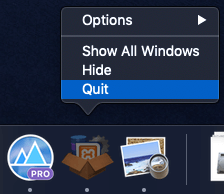XAMPP is a free distribution package that makes it easy to install Apache Web Server, PHP, PEAR, and MySQL. Before installing XAMPP, you should turn off any other web servers and instances of MySQL you have running on your Mac.
XAMPP is a free distribution package that makes it easy to install Apache Web Server, PHP, PEAR, and MySQL. Before installing XAMPP, you should turn off any other web servers and instances of MySQL you have running on your Mac.
XAMPP is completely free PHP development environment. It contains Apache distribution packed with mysql, PHP and Pearl which is available for most popular OS’s like Windows/Linux/Mac OSX, that makes you to configure and run Apache server in your local machine. Before downloading the XAMPP, be sure about the PHP version you need. Adding to PATH: Add the unpacked distribution’s bin directory to your user PATH environment variable by opening up the system properties (WinKey + Pause), selecting the “Advanced” tab, and the “Environment Variables” button, then adding or selecting the PATH variable in the user variables with the value C: Program Files apache-maven-3.6.3 bin.
Installing XAMPP on a Mac
- Download XAMPP for Mac OSX - Be sure to select the proper version of PHP. For Webucator classes, any version after 5 will be fine.
- Open the downloaded file (the DMG-Image).
- Drag and drop the XAMPP folder into your Applications folder.
Starting XAMPP on OSX
To start XAMPP simply open XAMPP Control (by going to /Applications/XAMPP/manager-osx.app in Finder) and start Apache and MySQL on the Manage Servers tab.
If MySQL Does Not Start
If your MySQL server isn't starting, you may need to set the permissions for it using Terminal with this command:
Testing your OSX XAMPP Installation
In your web browser, go to http://localhost. You should see the start page of XAMPP:

Class File Permissions
- Cmd+click on the ApplicationsXAMPPxamppfileshtdocs folder and select 'Get Info'.
- If the lock symbol at the bottom indicates that this information is locked, click the lock icon to unlock, and enter your user credentials.
- Once the settings are unlocked, choose 'everyone' under 'Sharing & Permissions' and change the option to 'Read & Write'.
Class Files
- Download the class files.
- After downloading the class files, navigate to ApplicationsXAMPPxamppfileshtdocs and create a new folder named Webucator and extract your class files in that folder.
Setting the MySQL Password on Macs
- The PHP files use 'pwdpwd' for the MySQL root password, while the default password is NO password.
- Change the password to pwdpwd by opening Terminal (Applications > Utilities > Terminal) and enter:
You will be asked to enter your Mac password; enter it and press enter. Then you will be asked if you want to set a password for your XAMPP pages, then for MySQL, and then for MySQL/phpMyAdmin user...to all of these just type 'n' for no and press enter.
Then it will say:
- Enter 'y' for 'yes, let me set a password for the root user' and press Enter
- Enter the password pwdpwd. You will be asked to enter it again for confirmation.
- Quit Terminal (Cmd+Q) and restart Apache and MySQL using the XAMPP Control Panel.
Testing phpMyAdmin

- Go to http://localhost
- Click on phpMyAdmin under Tools
- Enter 'root' for username
- Enter 'pwdpwd' for password
You should be able to get in.
Installing Northwind Database using XAMPP
NOTE: you should download the class files below before following these instructions, as it contains the Northwinds Database file(s).
- To install the Northwind database used in class, click on the 'phpMyAdmin' link on the left navigation bar of the XAMPP home page. That should take you to http://localhost/phpmyadmin.
- If it asks you to login, the username is root and the password is blank (unless you have already changed it to something else, like pwdpwd).
- On that page, click on the Import link under the Localhost heading.
- Browse to the Northwind-MySQL.sql file in your class files.
- Click the Go button on the bottom right of the page.
- You should get a Success message and Northwind should be added to the Database dropdown menu on the upper left of the page.
Recommended Editor
- Visual Studio Code ( Download, Install, and Set up)
- While you may use a different editor or IDE, Visual Studio Code is an excellent IDE to learn to code on. It provides a nice balance of power and simplicity and it is available on Windows and Mac.
Designate your testing server in Dreamweaver
NOTE: The following only applies if you are using Dreamweaver. If you are not, please ignore this section.
Xampp Install On Mac
- Go to Site > New Site.
- In the Site Setup dialog, fill in the Site Name (e.g., PHP) and browse to the Local Site Folder (e.g., ApplicationsXAMPPxamppfileshtdocs).
- Choose the Servers tab.
- At the bottom of the box on the right, click +.
- On the Basic tab, provide a Server Name, set Connect using to Local/Network, ensure the Server Folder matches the local site folder you specified in step 2, and set the Web URL to http://localhost/Webucator/ClassFiles/.
- Click the Advanced button.
- In the Server Model field, select PHP MySQL.
- Click Save. The server should appear in the table on the Servers tab.
- Make sure that both the Remote and Testing checkboxes are checked.
- Click Save.
Testing PHP Files
All your class files should be located in ApplicationsXAMPPxamppfileshtdocsWebucatorClassFiles
2 Methods for Testing Files in Browser
To test any of the class files in your browser, say ApplicationsXAMPPxamppfileshtdocsWebucatorClassFilesPHPBasicsDemosHelloWorld.php, you can use 1 of 2 methods:

Method 1:

- Go to http://localhost/Webucator/ClassFiles/PHPBasics/Demos/HelloWorld.php in your web browser.
- Follow the same pattern to view all other class files; basically the ApplicationsXAMPPxamppfileshtdocs gets changed to http://localhost/
Method 2:
- Go to http://localhost/Webucator/ClassFiles/ in your web browser.
- Bookmark that page in your browser for easy access to it from now on.
- From there, you can see all the lesson folders and drill down to any class file for testing/viewing

And that's it
Happy Mac XAMPPing!
This section describes on how to install Xdebug.
Installing with PECL
You can install Xdebug through PECL on Linux & macOS with Homebrew.Run:
Warning: You should ignore any prompts to add'extension=xdebug.so' tophp.ini — this will cause problems.
In some cases pecl will change the php.ini file toadd a configuration line to load Xdebug. You can check whether it did byrunning php -v. If Xdebug shows up with a version number, thanyou're all set and you can configure Xdebug's other functions, such as, or Profiling.
If pecl did not add the right line, skip to the Configure PHP section.
1 On macOS, you should have PHP installed with Homebrew.
Installing on Windows
There are a few precompiled modules for Windows, they are all for the non-debugversion of PHP. You can get those at the downloadpage. Follow these instructions to get Xdebuginstalled.
Installation From Source
Wamp For Mac
Obtain
You can download the source of the latest stable release 2.9.8.
Alternatively you can obtain Xdebug from GIT:
This will checkout the latest development version which is currently3.0.0beta1. This development branch might not always work asexpected, and may have bugs.
You can also browse the source on GitHub at https://github.com/xdebug/xdebug.
Compile
There is a wizard available that provides youwith the correct file to download, and which paths to use.
You compile Xdebug separately from the rest of PHP. You need access to thescripts phpize and php-config. If your systemdoes not have phpize and php-config, you willneed to install the PHP development headers.
Debian users can do that with:
And RedHat and Fedora users with:
It is important that the source version matches the installed version as thereare slight, but important, differences between PHP versions. Once you haveaccess to phpize and php-config, take thefollowing steps:
Xampp For Mac Os X
Unpack the tarball:
tar -xzf xdebug-2.9.8.tgzYou should notunpack the tarball inside the PHP source code tree.Xdebug is compiled separately, all by itself, as stated above.
cd xdebug-2.9.8phpizeIf phpize is not in your path, please make surethat it is by expanding the
PATHenvironment variable. Make sureyou use the phpize that belongs to the PHP version that you want to use Xdebugwith. See this FAQ entry if you're having someissues with finding which phpize to use../configure --enable-xdebugmakemake install
Configure PHP
Xampp For Mac Os X
Add the following line to
php.ini:zend_extension=/wherever/you/put/it/xdebugTo find out which
php.inifile to modify, run a script with thefollowing:Alternatively, you can run
php --inion the command line.Note: There could be more than one
php.inifile. In many set-ups there is a different one for thecommand line (oftencli/php.ini) and the web server (oftenfpm/php.ini).Note: If you want to use Xdebug andOPCache together, you must have the
zend_extensionline for Xdebugbelow the line for OPCache. Otherwise, they won't work properly together.Restart your webserver, or PHP-FPM, depending on what you areusing.
Verify that Xdebug is now loaded.
Create a PHP page that calls xdebug_info(). If you request thepage through the browser, it should show you an overview of Xdebug's settingsand log messages.
On the command line, you can also run
php -v. Xdebug and itsversion number should be present as in:
Xampp For Mac Free Download
With Xdebug loaded, you can now enable individual features, such asStep Debugging, or Profiling.
